Mango Moment: A sweet deal for Bangladesh
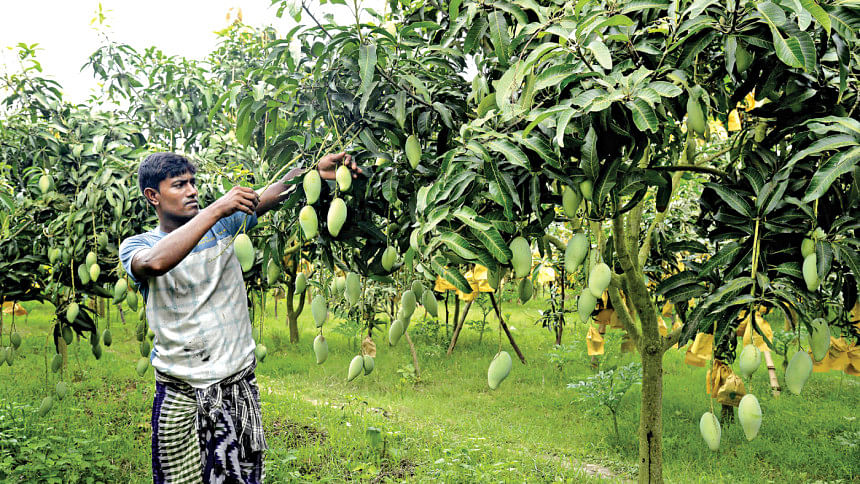
In late May, as mercury levels rise and monsoon clouds loom over the parched plains and verdant hills of Bangladesh, the mango harvest quietly gets underway, ushering in a season of sweetness just as the rains prepare to break.
Trucks groaning under crates of golden mangoes barrel down highways from Chapainawabganj and Rajshahi, the heartlands of Bangladesh's mango belt.
In markets from Dhaka to Chattogram, retailers jostle for prime spots while eager consumers queue for their first bite of the delectable local varieties, especially Langra or Himsagar — sweet, fragrant, and fleeting.
In this flurry of trade and taste lies a paradox: Bangladesh grows some of the world's most delicious mangoes, yet has barely scratched the surface of its economic potential.
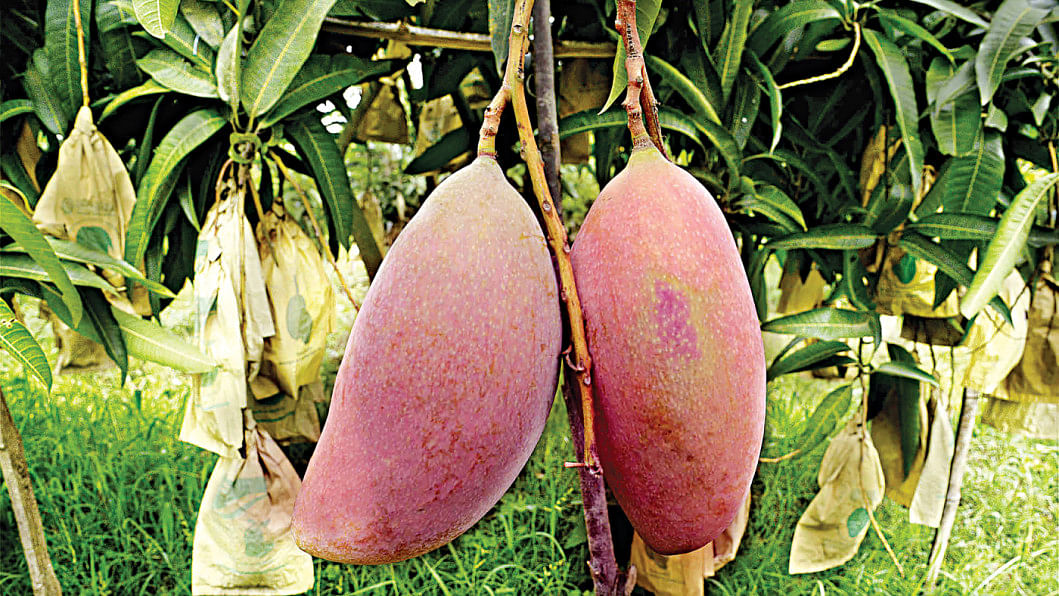
Despite producing over 20 lakh tonnes annually, mangoes remain a seasonal indulgence rather than a strategic industry. Processing remains minimal, exports are limited, and infrastructure is patchy.
According to the Agricultural Information Service, mangoes are not only the most widely grown and consumed fruit in the country but also among the most versatile in terms of use and nutrition.
Grown across all regions of Bangladesh, its rich aroma, sweet taste, and nutrient content have earned it the title of the "King of Fruits".
Yet, despite their popularity and widespread cultivation, mangoes remain undervalued as a formal industrial commodity.
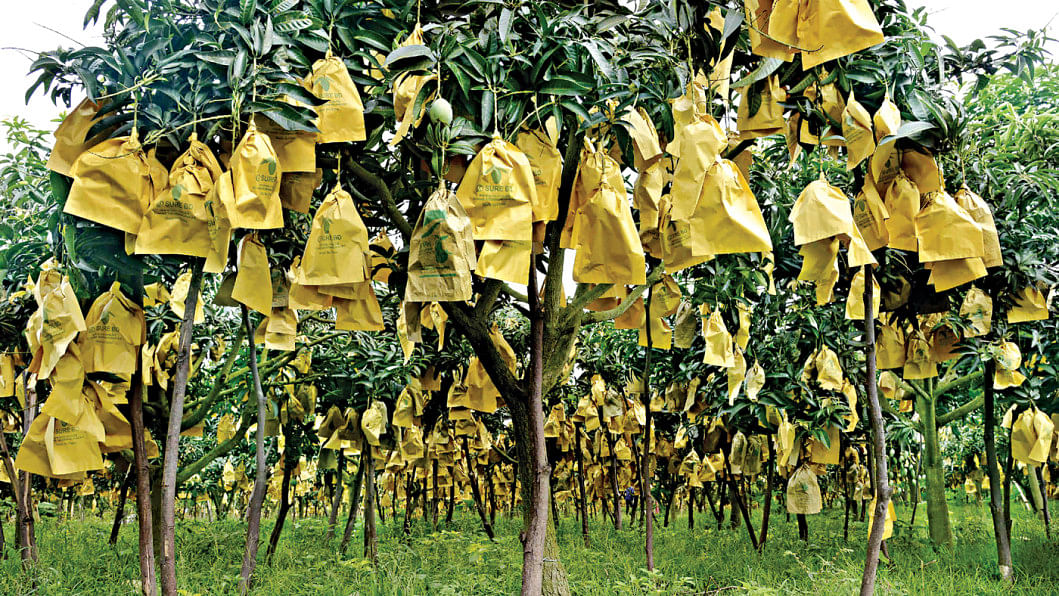
While farmers, nursery owners, and seasonal traders have long found the mango business a profitable venture, the country has made little progress in turning it into a staple of its agro-industrial portfolio.
Industry insiders point to a missed opportunity. With the increasing import of foreign fruit juices, jams, and jellies, Bangladesh has both the need and potential to develop a mango-based value-added industry.
Even if international sales remain modest, substituting imports with local production could retain significant capital within the country.
In a best-case scenario, mango-based export industries could bring about major socio-economic change through employment, rural development, and foreign exchange earnings.
Since 1985, the government has launched several initiatives to expand mango production. Yet the fruit is still missing from the national industrial strategy and is not treated as a strategic agro-processing product.
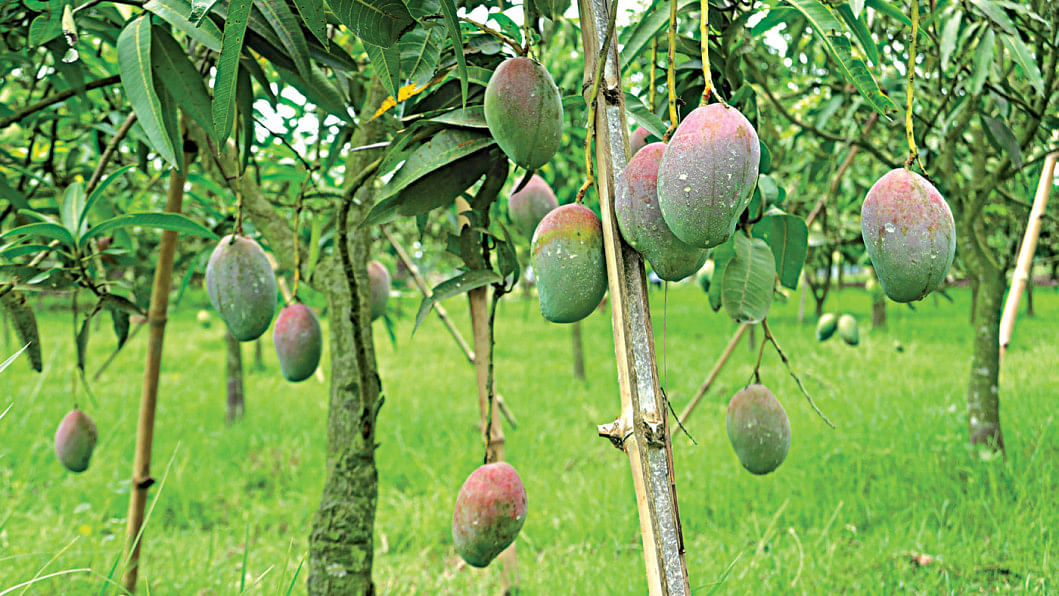
Currently, mangoes are cultivated across nearly 120,000 acres in Bangladesh, with key regions including Chapainawabganj, Rajshahi, Naogaon, and the Chittagong Hill Tracts (CHT), according to the Exportable Mango Production Project under the agriculture ministry.
The mango's economic importance is reflected in the labour it employs. In Chapainawabganj alone, every 10-acre orchard hires six to seven workers for a month, generating seasonal employment for nearly 80,000 people.
Globally, mangoes play a significant economic role in countries like the Philippines and India.
The Philippines employs spurring techniques for year-round production, while India has successfully positioned its mango industry as an agro-export powerhouse.
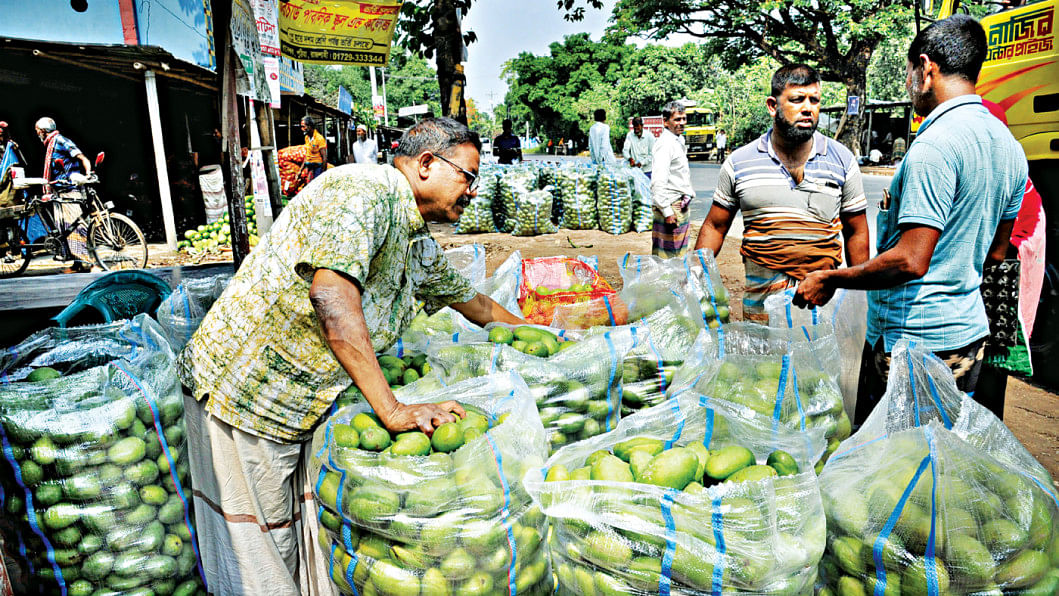
Bangladesh produces 24 to 25 lakh tonnes of mangoes annually, according to Mohammad Arifur Rahman, project director of the Exportable Mango Production Project.
This fuels a domestic market worth around Tk 13,000 to Tk 14,000 crore.
However, barriers to export persist. While the flavour of Bangladeshi mangoes is often considered superior, their short shelf life and inconsistent appearance limit global competitiveness.
"The taste is unmatched, but our exports suffer due to issues with colour and perishability," Rahman noted.
Mango season is a boom time in districts like Naogaon, Rajshahi, and Chapainawabganj. Nearly the entire local population -- students, hotel operators, truckers, and online sellers -- gets involved. Among the most common varieties are Himsagar, Langra, Fazli, and Amrapali, while hybrid varieties like Kathimon are gaining ground due to their bi-seasonal availability.
In the CHT, where mango cultivation is growing, challenges are acute. While mangoes from three hill districts are of high quality, ecological complexity and lack of consistent pest control hinder the residue-free certification needed for exports. "The quality is promising, but we still lack adequate assurance mechanisms," Rahman said.
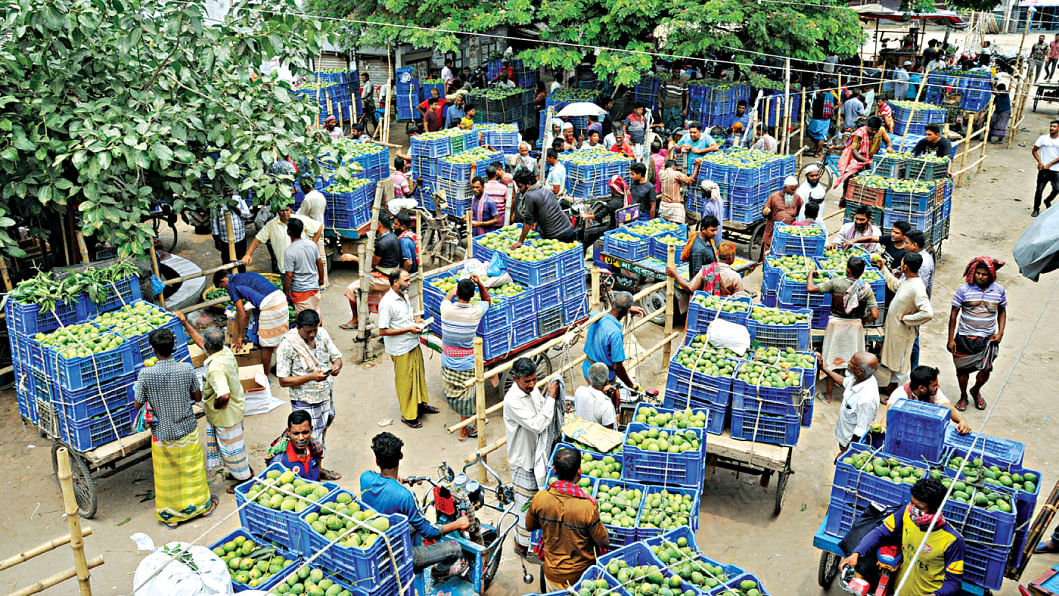
Despite these hurdles, mango production has grown by an average of 10 percent annually during the last five years. Across the country, around 80,000 people participate in the mango economy each season, from labourers and e-commerce operators to couriers and processors.
With 72 mango varieties in production and exports to 38 countries, Bangladesh's footprint is expanding. "At one time, quality was an issue. But now, farmers are producing export-standard mangoes with support from the government," Rahman said.
China, Japan, and Australia expressed interest in importing Bangladeshi mangoes this year. On this year's National Mango Launch Day alone (May 28), 10 tonnes were exported to Saudi Arabia, Qatar, UAE, England, and Germany.
This season, 153 tonnes have already been shipped to 13 countries.
Packing houses have been built in major production areas and farmers are being trained to follow Good Agricultural Practices (GAP) to ensure safety and quality.
Supermarkets in Switzerland and Sweden now stock Bangladeshi mangoes. The project also seeks to link farmers directly with exporters to reduce middlemen and ensure better prices for growers.
One of the industry's champions is Munjer Alam, an agripreneur from Chapainawabganj who left his corporate job in 2017.
He now manages a 135-bigha integrated farm, with 30 bighas under mango cultivation. "We're moving into dried mango, jam, powder, and juice. Processing gives us year-round income," Alam said.
He began exporting to the Maldives in 2023 and is now targeting Canada and the Middle East.
Alam estimates the mango sector's true value at Tk 30,000–35,000 crore, far above official figures.
"We need better post-harvest and quarantine infrastructure. If that's addressed, mangoes could become a billion-dollar export item," he said.
Another innovative voice is Abdun Nur Simul from Rajshahi, a seasonal orchard leaser and e-commerce mango trader. Simul has been in the mango business for four years.
"We lease high-yielding trees and oversee the entire process ourselves. Our mangoes go directly to customers via courier," Simul said.
Although the business is growing gradually, he said rising costs and erratic weather remain challenges.
His blend of traditional orchard leasing with modern logistics reflects a new frontier for mango marketing.
In the CHT, the mango revolution is reshaping lives. Historically self-reliant and ecologically balanced, the region is now becoming a fruit basket for the country, accounting for around 20 percent of national fruit production.
Debashish Chakma of Panchari, Khagrachhari, began farming on 15 acres in 2012 after leaving his job.
Today, he earns around Tk 25 lakh annually and employs 10 workers year-round. "More than 1,000 educated agribusiness entrepreneurs are active in Khagrachhari alone," he said. "We're laying the groundwork for an agro-processing boom."
One such visionary is Prasnata Chakma, a college lecturer-turned-agriculturist. "In 2022, I expanded from 60 to 1,500 trees. This year, I earned Tk 2.4 lakh," he said.
By 2030, he hopes to earn over Tk 50 lakh annually from mango and other fruits, including avocados, lemons, and wood apples.
Prasnata has already invested over Tk 14 lakh in his orchards over the past three years. His focus on pesticide-free, naturally grown mangoes has earned him a loyal customer base.
"The demand for clean, safe fruit is growing—and the hills are ideal for it," he added.
Currently, around 3,500 mango growers in Khagrachhari produce 60,000 tonnes annually, generating Tk 250 crore in revenue. With production growing by at least 10 percent yearly, the region's economic transformation is well underway.
The secret to their success? Purity. "We don't use harmful pesticides or toxic chemicals," Prasnata points out. "Our mangoes are naturally grown, and that's why consumers from the plains — and increasingly from beyond — are drawn to them."
Prasnata's story is more than just an individual success — it's a beacon of possibility for the entire CHT.
MA Sattar Mandal, professor emeritus at the Bangladesh Agricultural University in Mymensingh, said, "The time has come to unlock the full economic potential of mangoes – we urgently need a comprehensive national mango strategy."
Speaking to The Daily Star, Mandal, a leading voice in agricultural policy reform, outlined a vision that stretches far beyond seasonal harvests and roadside stalls.
He stressed the need for an integrated policy framework that nurtures the entire mango value chain – from varietal development and orchard management to advanced post-harvest handling, processing, and global marketing.
"To build a competitive mango economy, we must scale up research and development, provide soft loans to growers and exporters, and set up dedicated mango clusters with modern cold storage facilities, processing units, and transport networks," he said.
Mandal believes Bangladesh already holds many of the building blocks needed for success: fertile land, a favourable climate, rich varietal diversity, and a hardworking farming community.
"What's missing," he argued, "is coordinated policy and institutional backing that would allow this sector to thrive both domestically and internationally."
He also called for a paradigm shift—from viewing mangoes as a seasonal harvest to recognising them as a core agro-industrial commodity.


 For all latest news, follow The Daily Star's Google News channel.
For all latest news, follow The Daily Star's Google News channel. 

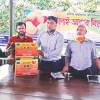





Comments